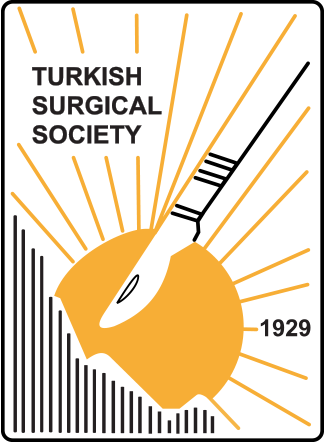Abstract
Purpose: Groin hernia repair is one of the most common operations in surgical practice. The best choice of anaesthesia and repair technique is still under debate. The aim of the study is to evaluate the results of groin hernia repair in a local hospital in Anatolia.
Materials and Methods: Data of the 230 adult patients, that underwent a hernia repair at a rural state hospital, were evaluated retrospectively.
Results: Regional anaesthesia and local anaesthesia were the mostly preferred types of anaesthesia. Lichtenstein procedure is the mostly used surgical method for groin hernia repair. Mean postoperative time spent in hospital was shorter in local anaesthesia group and was shorter for elective operations compared to emergency conditions. Another factor affecting postoperative hospitalization time is comorbid diseases. Postoperative morbidity was about the same between different anaesthesia groups.
Conclusion: Local anaesthesia has the shortest postoperative hospitalisation time for groin hernia. It would be used more common in groin hernia repair.
Keywords:
Groin hernia, hernia repair, outpatient surgery, hospitalisation time
References
1SSAT Patient care guidelines Surgical repair of groin hernias. J Gastrointest Surg 2007; 11: 1228-1230.
2Kehlet H, Aasvang E. Groin hernia repair: Anesthesia. World J Surg 2005; 29: 1058- 1061.
3Koç M, Tez M, Yoldaş Ö, et al. Cooling for the reduction of postoperative pain: prospective randomized study. Hernia 2006; 10: 184- 186.
4Farrakha M, Shyam V, Bebars GA, et al. Ambulatory inguinal hernia repair with prolene hernia system (PHS). Hernia 2006; 10: 2-6.
5Motson RW. Why does NICE not recommend laparoscopic herniorrhaphy? BMJ 2002; 324: 1092-1094.
6Çubukçu A, Gönüllü NN, Alponat A, ve ark. Yapay yama ile kasık fıtığı tamirinde iki farklı tespit yönteminin karşılaştırılması. Çağdaş Cerrahi Dergisi 2000; 14: 92- 95.
7Fitzgibbons RJ Jr, Filipi CJ, Quinn TH. Inguinal hernias. In: Brunicardi FC, Andersen DK, Billiar TR, Dunn DL, Hunter JG, Pollock RE;Eds. Schwartz's Principles of Surgery. 8th ed. International Edition: McGraw-Hill Companies, Inc. 2005: 1353-1394.
8O'Dwyer P, Serpell MG, Millar K, et al. Local or general anesthesia for open hernia repair: A randomized trial. Ann Surg 2003; 237: 574- 579.
9Ferzli GS, Khoury GE. Treating recurrence after a totally extraperitoneal approach. Hernia 2006; 10: 341-346.
10Novitsky YW, Czerniach DR, Kercher KW, et al. Advantages of laparoscopic transabdominal preperitoneal herniorrhapy in the evaluation and management of inguinal hernias. Am J Surg 2007; 193: 466- 470.
11Gönüllü NN, Çubukçu A, Alponat A. Comparison of local and general anesthesia in tension-free (Lichtenstein) hernioplasty: a prospective randomized trial. Hernia 2002; 6: 29-32.
12Hair A, Duffy K, McLean J, et al. Groin hernia repair in Scotland. Br J Surg 2000; 87: 1722-1726.
13Özgün H,Yardım SR, Çanakkalelioğlu L ve ark. Aydın şehrinde inguinal herni cerrahisinin durumu. Ulusal Cerrahi Dergisi 2001; 17: 117- 124.
14Usher FC, Cogan JE, Lowry TI. A new method for the repair of inguinal and incisional hernias. Arch Surg 1960; 82: 187-194.
15EU Hernia Trialists Collaboration. Mesh compared with non-mesh methods of open groin hernia repair: systematic review of randomized controlled trials. Br J Surg 2000; 87: 854- 859.
16Gilbert AI, Graham MF, Young J, et al. Closer to an ideal solution for inguinal hernia repair: comparison between general surgeons and hernia specialists. Hernia 2006;10: 162-168.
17DesCoteaux JG, Sutherland F. Inguinal hernia repair: a survey of Canadian practice patterns. Can J Surg 1999; 42: 127- 132.
18Lichtenstein IL, Shulman AG, Amid PK, et al. The tension free hernioplasty. Am J Surg 1989; 157: 188- 193.
19Khan LR, Kumar S, Nixon SJ. Early results for mew lightweight mesh in laparoscopic totally extra-peritoneal inguinal hernia repair. Hernia 2006; 10: 303- 308.
20Andersen FH, Nielsen K, Kehlet H. Combined ilioinguinal blockade and local infiltration anaesthesia for groin hernia repair- a double blind randomized study. BJA 2005; 94: 520- 523.
21Kehlet H, White PF. Optimizing anaesthesia for inguinal herniorrhaphy: general, regional or local?. Anaesth Analg 2001; 93: 1367- 1369.
22Nordin P, Zetterström H, Gunnarsson U, et al. Local, regional or general aneaesthesia in groin hernia repair: multicenter randomised trial. Lancet 2003; 362: 853-858.
23Callesen T, Bech K, Kehlet H. One-thousand consecutive inguinal hernia repairs under unmonitored local anesthesia. Anasth Analg 2001; 93: 1373- 1376.
24Kark AE, Kurzer MN, Belsham PA. Three thousand one hundred seventy-five primary inguinal hernia repairs: advantage of ambulatory open mesh repair in local anaesthesia. Am Coll Surg 1998; 186: 447- 455.
25Jacquet E, Puche P, Alahyane J, et al. Evaluation of inguinal hernia in ambulatory surgery: A prospective monocentric study on 1009 inguinal hernia. J Ambulatory Surgery 2006;12:167- 171.
26Özgün H, Kurt MN, Kurt I, et al. Comparison of local, spinal, and general anaesthesia for inguinal herniorrhaphy. Eur J Surg 2002; 168: 455- 459.
27Bay-Nielsen M, Kehlet H, Strand L, et al. Quality assessment of 26,304 herniorraphies in Denmark: A prospective nationwide study. Lancet 2001; 358: 1124- 1128.
28Nordin P, Haapaniemi S, van Der Linden W, et al. Choice of anesthesia and risk of reoperation for recurrence in groin hernia repair. Ann Surg 2004; 240: 187- 192.
29Çetinkaya Z, Doğru O, İlhan YS, ve ark. İnguinal hernilerde anterior yaklaşımla yama uygulaması. Çağdaş Cerrahi Dergisi 1998; 12: 158-160.
30Ergüney S, Yalım Y. 97 Olguluk kişisel inguinal herni serisinin analizi. Çağdaş Cerrahi Dergisi 1992; 6: 267- 270.
31Jensen P, Mikkelsen T, Kehlet H. Postherniorrhaphy urinary retention-effect of local, regional and general anesthesia: A review. Regional Anesthesia Pain Medicine 2002; 27: 612- 617.
32O'Riordan DC, Kingsnorth AN. Audit of patient outcomes after herniorrhaphy. Surg Clin North Am 1998; 78: 1129- 1139.



